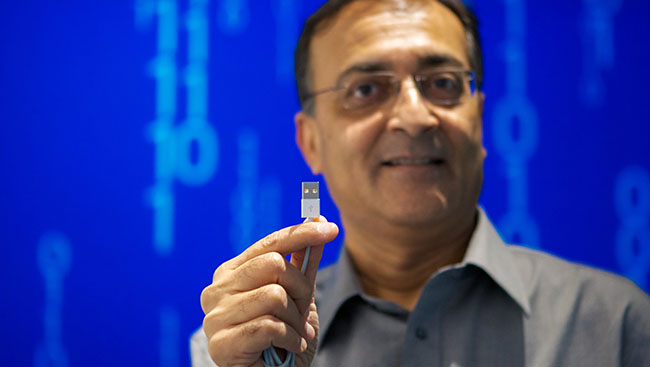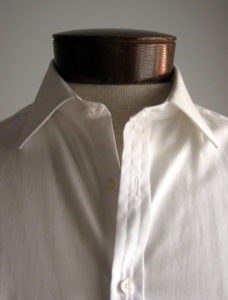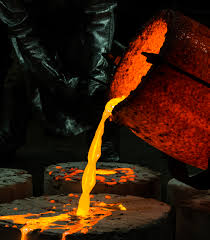From Ancient Times to the Modern: 7 Indian Inventions You Use In Daily Life!
In this article, we shall see old inventions that we use to this date and newer ones that have just come about. Nevertheless, these are inventions from India that changed the world!

Discoveries and innovations are almost always created out of necessity. A necessity to either fulfil our needs or even to improve upon existing systems.
In this article, we shall see old inventions that we use to this date and newer ones that have just come about. Nevertheless, these are inventions from India that changed the world!
THE USB PORT
For the seamless transfer of files from a pen drive to the computer, and the ease of connecting various devices, you would have to thank Ajay V Bhatt.

The Indian-American computer architect helped define and develop not only the USB but also various other technologies like AGP (Accelerated Graphics Port), PCI Express, Platform Power Management Architecture and other numerous chipset improvements.
The USB or the Universal Serial Bus was invented in 1995 out of a necessity to have a common port that can be adapted by systems across different platforms. This adaptation led manufacturers of peripheral devices like keyboards and speakers to maintain a constant design, which would lead to lower cost production and an overall increase in compatibility.
BUTTONS AND COTTONS

Yep, from the button that holds your shirt to the shirt itself, these two useful inventions were developed during ancient India.
Way before buttons came onto fabric, Indians used cotton to make pieces of cloth. This was achieved by cotton cultivation which dates back to the 5th century BCE. The cultivation was seen in the Indus Valley Civilisation and contributed to the boom of cotton usage.
The earliest use of buttons was seen during the Mohenjodaro period where they were used for ornamental purposes. Smaller seashells were adorned on fabric for this purpose. It was only later that buttons were attached to cloth pieces and used in the form of fasteners.
And not just buttons, equipment used to weave clothes such as spinning wheels and cotton gins also originated from India!
RADIO WAVES
Although video killed the radio star, radio waves went on to take different forms from being used in telecommunications to broadcasting signals. Radio waves or microwave communications were heavily studied during the later part of the 19th century.
But it was an experiment demonstrated by Jagadish Chandra Bose in 1895 that encapsulated the potential uses of microwaves in communication.
Bose transmitted microwaves using his apparatus, showcasing that they are a form of “invisible light” that pass through solid objects with ease.

Bose’s revolutionary demonstration formed the foundation of the technology used in mobile telephony, radars, satellite communications, radio, television broadcasts, WiFi, remote controls and countless other applications that are used widely today.
RULER
That simple apparatus which has been a part of our geometric boxes was a crucial invention of the ancient period that let engineers build structures and other instruments with precision.
The ruler came out of the need to measure things in a standardised manner instead of using the hand or the foot which invariably have differing measurements. Excavations at Lothal near Gujarat have yielded one ruler calibrated to about 1⁄16 inch (1.6 mm) dating back to 2400 BCE.
Surely, the ruler was a benchmark and ruled all forthcoming inventions.

THE PENTIUM CHIP
The invention of the Pentium microprocessor chips took computers to the next level of processing. A microprocessor, like the one powering your computer or your smartphone, consists of millions of transistors that process numerous functions in a split second.
For the chip, we must thank Vinod Dham. Known as the Father of the Pentium Chip, Vinod developed the chip for Intel in the year 1993. When it came out, it put to shame its competitors like Motorola, SPARC and Alpha microprocessors.
The superscalar architecture and the 64-bit computing is still the base technology for many computer chips today.

IRON

Metal was found in sites of Uttar Pradesh, dating back to 1800-1200 BCE. It is estimated that iron and metal works emerged in Europe and the Middle East around the same time.
In India, ironworks was not only used to make weapons but also cutlery and ornaments. The technology of iron smelting was so honed that blacksmiths created corrosion-resistant iron, like the one used in the Iron Pillar of Delhi which has withstood corrosion for over 1,600 years!
Not only iron but a lot of metallurgy emerged from India, from the crucible steel to the renowned wootz steel and even seamless celestial globes which were thought to be impossible to make even with modern technology. These inventions contributed to the industrial revolution in India so much so that today, India is among the world’s largest exporters of iron and steel.
SHAMPOO
That bottle of shampoo that sits in your bathroom originated out of a need to clean one’s hair. The word shampoo is derived from the Hindi word Champo or Champna meaning “to stamp or knead”.
The invention dates back to 1762 where a variety of herbs and their extracts were used along with aamla to procure a solution which was used to “knead” onto the hair.
During colonial times, when the European traders were made to indulge in champu, they took back the learnings to their homeland where shampoo was popularised.
This is but a glance at the inventions and discoveries that emerged from India. And the possibilities of new inventions is brimming with potential. (as long as the young generation doesn’t spend all its time on Netflix).
(Edited by Shruti Singhal)
Hey, you may also like: 16 Significant Science and Tech Discoveries Ancient India Gave the World
Like this story? Or have something to share?
Write to us: [email protected]
Connect with us on Facebook and Twitter.
NEW: Click here to get positive news on WhatsApp!
This story made me
- 97
- 121
- 89
- 167
Tell Us More
We bring stories straight from the heart of India, to inspire millions and create a wave of impact. Our positive movement is growing bigger everyday, and we would love for you to join it.
Please contribute whatever you can, every little penny helps our team in bringing you more stories that support dreams and spread hope.



















